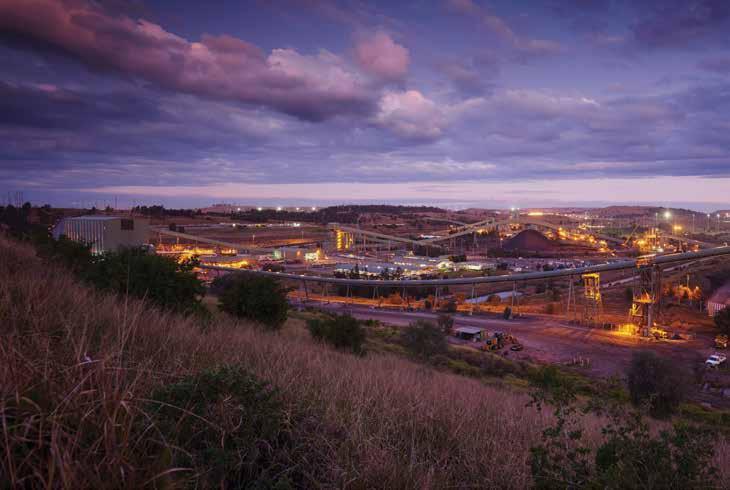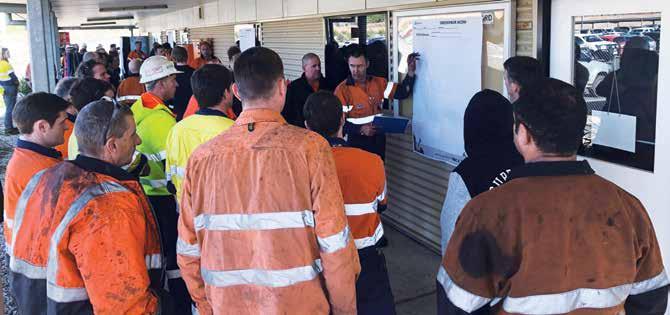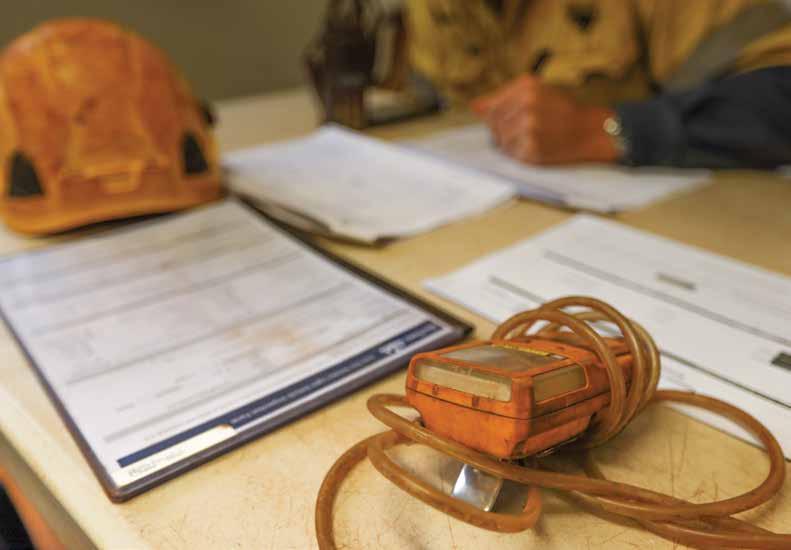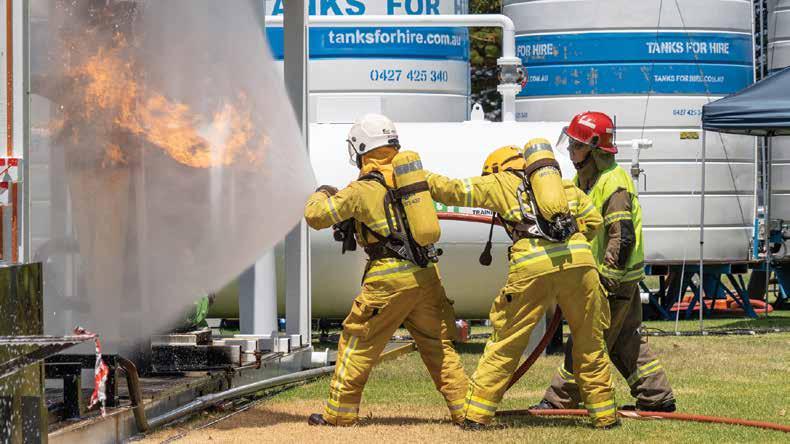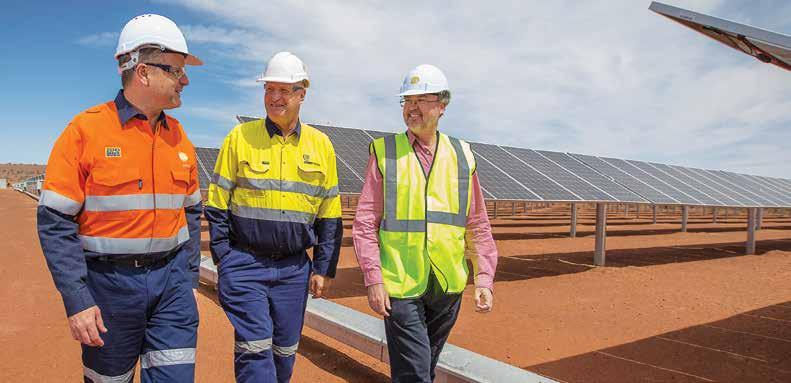
6 minute read
Coal’s place in green future

Will coal get a chance to breathe in climate-aware future?
Adani Renewables Australia celebrates the official opening of its Rugby Run solar farm in central Queensland.
Australian coal producers are aware of the threats of climate change.
Their indirect role in propping up the growth of underdeveloped economies through the production of coal by-products doesn’t, however, overshadow their responsibility to protect the environment.
The International Energy Agency (IEA) points out that in 2018, energy demand worldwide increased by 2.3 per cent, its fastest pace in a decade.
World energy demand is also projected to grow by 27 per cent to 17.7 billion tonnes of oil equivalent between 2017 and 2040.
In the same period, fossil fuel demand will grow by 16 per cent to 13.1 billion tonnes of oil equivalent.
IEA says that while coal demand is falling in Europe and North America, it is still growing in Asia where over half of the world’s population lives.
South Africa, Russia and South East Asian nations are the three regions where energy coal demand is more resilient, according to South32.
Federal Resources Minister Matt Canavan publicly backed Australian resources as being key to combatting global poverty in some of these countries at the 2019 International Mining and Resources Conference in Melbourne.
Limiting access to Australian coal would put other developing countries in an arduous struggle to grow, Canavan says.
“We have a moral, economic and environmental duty to responsibly develop our resources to help deliver better outcomes for all people in the world,” Canavan argues.
The Minerals Council of Australia (MCA) chief executive Tania Constable agrees that coal is a nation-building material that is indispensable in the provision of essential infrastructure and for reliable low-cost energy in countries like China, India and Vietnam.
But the existence of global energy demand amid environmental and social pressure is a shared challenge that is not only faced by coal producers.
It also requires the actions of all governments and a wide crosssection of industrial sectors beyond mining including electricity generation, transport and culture, according to Whitehaven Coal.
The Sydney-based coal producer acknowledges that the production and consumption of coal contributes to greenhouse gas (GHG) emissions, but the company does its share to meet the energy needs responsibly.
Whitehaven is an operator of open cut mines at Maules Creek, Tarrawonga, Werris Creek and Sunnyside, and an underground operation at Narrabri.
The thermal and metallurgical coal produced at these operations is bound primarily for export markets in north and South Asia.
“Our objective is to help meet projected increases in global energy demand in our near region – where we can leverage our geographic proximity to new coal markets – while making a RISING ENERGY DEMAND AND CLIMATE CONCERNS ARE FACING OFF OVER THE CONTINUITY OF COAL PRODUCTION IN AUSTRALIA. SAFE TO WORK LOOKS AT WHAT THE AUSTRALIAN COAL SECTOR IS DOING TO APPEASE THE TENSIONS.
material, practical contribution to carbon emissions reduction efforts,” Whitehaven states in its climate change report.
“We do this by combining our lowash, low-sulphur, high-energy coal with the most technologically advanced, highest efficiency, and lowest-emitting power stations in operation.”
Whitehaven believes advanced technologies and innovation still offer the best solution for managing climate risks and reducing GHG emissions.
As a result, the company invests in the development of low-emissions technologies through COAL21, a low emission technology fund that is primarily focussed on carbon capture and storage research.
This investment could contribute further material reductions in GHG emissions.
But with the future of the global energy mix tied to public opinion, South32 decided to offload its South Africa thermal coal operations in November last year.
The BHP spin-off found a buyer in South African black-owned and operated company Seriti Resources, which secured the deal for ZAR100 million ($9.8 million).
South32’s only coal operation is now Illawarra Metallurgical Coal in New South Wales, which produces mid volatility hard coking coal that goes into steelmaking blends globally.
The same project is also involved in South32’s emissions reduction project, which has successfully developed Australian Carbon Credit Units (ACCUs).
“This involved installing and operating additional flaring devices to capture and combust the methane component of coal mine waste gas from the mine,” South32 states.
“This project has generated approximately 240,000 ACCUs. We’ll continue to reduce emissions with this project when operating conditions allow us to do so.”
Illawarra Metallurgical Coal, along with the Worsley Alumina operations in Western Australia, contributes to around 55 per cent of South32’s scope one emissions.
South32 has selected the two operations in its studies to identify potential decarbonisation initiatives.
In the 2020 financial year, South32 will progress these initiatives into pre-feasibility planning, in line with the company’s goal of net zero emissions by 2050.
In the midst of an industry trend that sees mining companies such as South32 and Rio Tinto bowing out of their thermal coal businesses, hardly any other miner is as adamant as India’s Adani in pushing its agenda for the commodity in Australia.
Adani’s Carmichael project in the Galilee Basin in Queensland has been the subject of almost a decade of industry controversy as the company has worked through the approvals process to develop the site.
The approvals dispute reached a climax in June last year, with Adani commencing construction of a scaleddown version of the Carmichael project.
Adani is aware that the rising global energy demand must be met with responsible management of carbon emissions, according to a company spokesperson.
“We accept the science of climate change. The climate challenge is one that we must all collectively address across the globe,” the spokesperson says.
“Providing a sustainable energy mix to meet increasing energy demand will play a critical role in improving the quality of life in developing nations like India.”
Adani commissioned the world’s largest single location solar power plant of 648 megawatts in 2016. The company already has more than 2300 megawatts of renewable energy in operation, an equivalent energy requirement to power the state of South Australia.
Adani Renewables Australia also switched on its first solar farm at Rugby Run in central Queensland in October last year.
The 65-megawatt solar farm will generate 185,000 megawatt hours of power each year, powering about 23,000 regional Queensland homes a year.
“There is no doubt that renewables will play an increasingly important role in our future energy mix, but renewables alone are not enough to meet increasing global energy demand,” the Adani spokesperson says.
“We must also ensure our energy sources are reliable and affordable, and that is where coal has a critical role to play.”
Constable points out that Australia’s minerals industry understands responsible environmental management is fundamental throughout the lifecycle of a mine.
This includes industry commitment to the rehabilitation of mined land and water stewardship, while undertaking voluntary conservation initiatives to conserve species, habitat and address biodiversity decline.
The MCA is also developing a climate action plan to build on the sector’s contributions towards the climate goals of the Paris Agreement. “We are working with member companies to share and promote practical actions to address the challenge of climate change,” Constable says.
If anything, the Australian coal industry appears to agree on one thing: the key to reducing carbon emissions lies in technology’s ability to produce coal responsibly.
This approach will not only benefit the world’s superpowers, but also those that are emerging in the wings.

